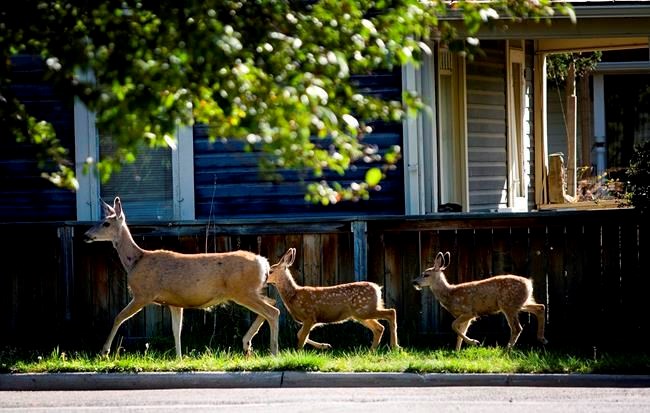Oak Bay has moved a step closer to “fixing” its deer problem.
A new report that estimates the size of the district’s black-tailed deer population paves the way for a birth-control program to get underway this summer.
The report pegs the number of deer at anywhere from 72 to 128.
Mayor Kevin Murdoch said the census was required by the provincial government as part of an agreement to administer a contraceptive vaccine to as many as 80 does between the fawning and rutting seasons this year.
“We’ve already committed to doing immunocontraception,” Murdoch said. “We have permit in hand and we’re scheduling the actual work — the immunocontraception — to happen in the summer when the fawning season is over.”
The population count was conducted by an independent team in co-operation with the district, the provincial government and the Urban Wildlife Stewardship Society.
Researchers collected data on population density and distribution by putting radio collars on 20 does last year and setting up 39 remote cameras on private and public properties across Oak Bay.
The deer were detected more frequently at cameras across south Oak Bay and around golf courses.
Murdoch said the total number of deer was likely lower than a lot of people expected.
“We’ve scheduled for up to 80 does to be inoculated, and, in the wild, there’s typically about a 60-40 doe-to-buck split,” he said.
“So if we’re something similar in Oak Bay, the 80 [inoculations] should be enough to apply contraception to all the female deer — at least close to it.”
Murdoch said Oak Bay and the province are spending about $35,000 each on the project this year.
“It’s about a $70,000 project, so that includes both the study as well as the immunocontraception,” he said.
The district and the province spent $40,000 each year over the past two years, bringing the total cost for the project to about $150,000 over three years.
“There was really a concerted effort made at the end of last year by everybody to get the permits in hand and get this report done and get all the pieces in place so that we don’t have any reasons not to do the work,” Murdoch said. “
“That’s been kind of a driving goal of our council, to make sure that in 2019 we’re actually applying contraception to as many deer as we can.”
Oak Bay has been struggling for years to deal with a growing deer population and dozens of deer dying on its roads each year. In 2015, the district approved a cull that killed about 11 deer over two years, but that program prompted a backlash by animal rights activists and others.



